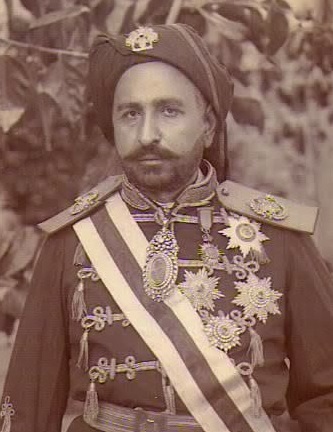
James Hoard
For Deletion-
Posts
632 -
Joined
-
Last visited
-
Days Won
1
Content Type
Profiles
Forums
Blogs
Gallery
Events
Store
Everything posted by James Hoard
-
The Journal des débats politiques et littéraires of 8th September 1935, mentions that H.H. Maharaja Bhupindra Singh of Patiala conferred the Grand Collars of his Orders of Krishna and the Holy Saint on H.M. King Carol II of Romania, and the GC of the Order of the Holy Saint on H.M. Dowager Queen Marie and H.R.H. the Grand Voyvode Michael (later H.M. King Michael). In return, the King conferred the GC of the Order of Faithful Service on the Maharaja, the GC of the Order of the Crown of Romania on the Maharani, and the GC of the Order of the Star of Rumania on Prince Yadavindra Singh. However, a portrait of the young Maharaja Yadavindra Singh from the late 1930's appears to show him wearing the breast star of the GC of the Order of Faithful Service (Serviciul Credincios). Given the evident error over the Order of Faithful Service, I wonder is anybody could confirm the actual award conferred on Maharaja Bhupindra Singh. Did he receive the GC of the Order of the Star of Rumania or some other higher award? Carol I perhaps. [He had previously received the GC of the Order of the Crown at the end of WWI in 1918]. It would also be very useful to have the actual date of these awards. Can anyone identify the slightly skewed, dark enameled Maltese cross, Maharaja Yadavindra Singh is wearing around his neck? Cheers
-
New Order for Tonga
James Hoard replied to James Hoard's topic in Rest of the World: Militaria & History
The Getty picture is misdated. The picture dates from between 1970 and 1977. The then King received the GCVO in 1970 and was promoted to GCMG in 1977. Not sure why the Cr Pr is wearing the 2nd class 7-pointed breast star of the Order of George I, rather than the 8-pointed 1st class breast star. He was prom to the GC at the time he was formally installed as Crown Prince in 1969. There are pictures of him in Pacific Islands Monthly at the time, where he appears wearing the sash and sash badge, the breast star and a chest medal. Unfortunately, the breast star in that picture is indistinct because he is in tropical uniform and the picture was somewhat overexposed so one has nothing to compare. At the time of the Coronation in 1967, the Cr Pr wore the breast starts of three orders, and neck badges of two orders. In senior position, the breast star was 8-pointed. Somewhat akin to the first class of the Order of George Tupou I, but a little indistinct so I cannot be sure what it is. The second breast star was clearly the old version of the Order of the Crown of Tonga - 4-pointed (almost identical to the Prussian order of the same name). In third position the 2nd class, 7-pointed star of the Order of George Tupou I. As for the two neck badges, the first worn at the throat is the 5-pointed badge of the Order of George Tupou I. At the second button hole, the badge is a four armed, white enamelled Geneva cross, with a circular disc in the centre. This is identical to the one in the Getty picture, so I would surmise that the neck badge the Order of the Crown, rather than "Cross of Merit". The second breast star in the Getty picture is almost certainly the Order of the Cross of Tonga, though the name of this order is not a 100% certainty. I am, of late, quite dubious about the existence of a "Cross of Merit". I now suspect that this term has been mistakenly applied to what were junior classes of the Order of the Crown and Order of the Cross of Tonga. Like "Medal of Merit", the term may perhaps be a catch all from the American numismatic world, applied whenever anything unfamiliar cropped up but one didn't want to appear unknowing. I append a copy of the 1967 Coronation picture which depicts the Crown prince wearing the three breast stars and two neck badges of the second class orders he then held. And here, an image of the Pacific Island Monthly 1969, in which the Cr Pr is depicted wearing the GC of the Order of George Tupou I. -
Yes Peter, I am afraid the publication is an academic one. However, for the really interested I thought I would give the full reference in case they had a mind to chase it up.
-
This post is ages late and the thread has morphed since the original post by Megan, but some new information on this that may be relevant. Lij Iyasu, who succeeded Menelik II and was deposed in 1916, instituted several decorations during his brief reign 1913-1916. Unfortunately, very little is know about them. The only one that I have been able to find any information on is the Order of the Lion of Judah. Instituted ca 1914, lapsed 1916. It had either 4 or 5 classes. The badge was very similar to the Order of the Seal of Solomon, based on the Star of David, but with the Ethiopian "Lion of Judah" carrying its cross in it's paw. The only extant example of the GC is the one presented to Friedrich-Wilhelm von Syburg, German Minister at the Court of Iyasu V 1914-1918, now in the collection of Jürgen Otto, who purchased it from the estate of Syburg's childless son. The insignia are depicted on page 72 of Wolbert G.C. Smidt, “Photos as Historical Witnesses: The First Ethiopians in Germany and the First Germans in Ethiopia, the History of a Complex Relationship (Afrika Visuell Book 2)”. LIT Verlag (Mul edition), 2015. ISBN-13: 978-3643101952; ISBN-10: 3643101953. The breast star is often seen in old photographs of senior noblemen and officials who survived the Iyasu era into the early years of the reign of Haile Selassie I, but usually misidentified as the Order of Solomon. However, the tell tale signs are that the Judah star's points are a little elongated and usually worn in a relatively junior position. See the portrait of H.E. Bitwodad Makonnen Demissie attached. The riband appears to have been worn over the left shoulder, with the badge resting on the right hip. The colour must have been red or crimson (the extant sash is now faded to a sort of soft pink). I also seem to vaguely remember a blue stripe, but cannot now recall if it went down the centre or towards each edge. To my horror I had a good image of this same insignia for several years, then foolishly deleted it sometime later believing the decoration to be a fantasy. The best I can now find is a lower class (4th or 5th) - attached below. I am afraid that the "Crown Council" came up with the new creation (depicted above by Megen) for the US and Iberian gong-hunting market, completely misunderstanding the history of the Order of the Lion of Judah. Most likely the title of "Ethiopian Lion" comes from a misreading of a German reference. Their website speaks of the order being derived from the Order of Emperor Menelik II and a good deal of other eye wash.
-
Indian Princely States - Idar State Georve V Jubilee Medal?
James Hoard replied to James Hoard's topic in South Asia
-
Indian Princely States - Idar State Georve V Jubilee Medal?
James Hoard replied to James Hoard's topic in South Asia
I do have some other pictures Paul, I am just waiting for the grandson's permission to publish them. They are not ideal, because the ribbons are tightly stitched to one another, but he has turned it over sideways and photographed the medal obverse and reverse at 90 degrees. The picclick website does have another of these medals, but the suspension is quite different from the Idar version and without ribbon or any other clues I do not know who the issuing authority was. http://picclick.co.uk/GB-1935-Silver-Jubilee-King-George-V-142070533218.html -
Indian Princely States - Idar State Georve V Jubilee Medal?
James Hoard posted a topic in South Asia
I have been sent the following image of an Indian medal bar by the grandson of the recipient, a former Captain in the Idar State Forces who served in WWII and later Honorary Commandant of the Home Guard in the state of Gujarat. The last medal in the group is what interests me. Unfortunately, I do not yet have his permission to publish larger images of it but close-up analysis seems to show the medal, mounted for wear, with a distinctive ribbon and an "Idar State" clasp, but otherwise identical to the George V Jubilee Medal 1910-1935 illustrated in this article - http://www.thamesweb.co.uk/windsor/memorials/geov_medal.html Can anybody shed more light on this state award, if that is what it is? Cheers. -
Hawaii - medals
James Hoard replied to James Hoard's topic in Rest of the World: Militaria & History
That's it - the World Tour Medal: "Maltese cross made of stainless steel, with central medallion made as revolving terrestrial globe of ceramics with marking of the around-the-world Royal Tour 1881. The cross is surmounted with a steel riband knotted and engraved 1874-1881." Number 5 is definitely not Hawaiian, the crown is continental European. Your medal is the actual so-called Coat of Arms Medal: "Size is 55 mm, gold and brass, in the shape of a sanded Maltese cross with polished edges. Central medallion is circular and charged in obverse with Hawaiian Greater Coat of Arms." Please see Dragomir's post on the previous page. Cheers. -
New Order for Tonga
James Hoard replied to James Hoard's topic in Rest of the World: Militaria & History
I am not really sure anymore if the insignia as designed by Worth was necessarily the same as that eventually produced and conferred. The present King does not seem to wear any orders and decorations, other than those physically invested upon him. So I suspect that the Royal Household Star was the one given to him by his late brother in August 2011, and not a new design or creation. I have not seen any pictures of anyone else who has received the same class of decoration wearing a GC breast star the same as the original Worth design. It seems that several other proposals for orders and decorations proposed by Worth were either not accepted or not acted upon. So the Tongans may well have gone their own way after the submission of designs, based on what the actually manufacturers could provide, cost constraints, etc. There does not appear to be any evidence for a change in riband colour for the Order of Queen Salote. To add a little more into the heady mix of Tongan orders. Here is what is believed to be the Order of the Tongan Star conferred on Neville Packett - Grand Cross collar, sash, sash badge and miniature. Copyright Christopher Buyers Cheers. -
Libya - unknown order and medal
James Hoard replied to James Hoard's topic in Middle East & Arab States
Thank you everyone for all your useful comments and valuable ideas. Apologies for not replying earlier but I have had a lot of trouble logging into my account. Eventually managed it today by ignoring everything and logging-in anonymously via Facebook. The Libyan decoration would, I imagine, be a first class decoration of the President of the Divan Owain, as regards the Sultan Saeed of Oman Medal. He succeeded on his father's abdication 10th February 1932, which corresponds to 2nd Shawwal 1350 (sic) not 1351. So could this medal have been issued to commemorate the first anniversary? Unfortunately the image is as received. So I do not have anything larger and cannot really say if the play of museum lights is giving it a golden glow or not. I would "imagine" not, because the white border within the case is fairly white, as is the gloved hand holding it. Cheers -
Hawaii - medals
James Hoard replied to James Hoard's topic in Rest of the World: Militaria & History
That's very interesting. I am actually more interested in the picture of the King and his medal bar! There seem to be several decorations that are not easily unidentifiable, and could be other Hawaiian decorations hitherto not mentioned in texts I have seen. The first on his medal bar looks to be his badge of the Order of Carlos III of Spain (received 1881), number 2 looks like either the North Star of Sweden (received 1884) or Vasa of Sweden (received 1881), and number 7 appears to be the Dannebrog of Denmark (received 1880). Number 5 with a "continental" crown may be another one of the many foreign orders he received. However, numbers 3, 4, 6, and 8 may be Hawaiian. Number 6 also looks very much like your "Holo Hana Cross" but the ribbon is clearly different. Whether number 6 is actually the same as the "Holo Hana Cross" mentioned elsewhere is open to a little doubt, because the description I have seen mentions a "fire chief trumpet" and a ribbon of 2 red and 2 yellow stripes. Number 4 may well be the so-called "Coat of Arms" medal. This is mentioned by Adrienne Lois Kaeppler in Bernice P. Bishop Museum Special Publication, Volumes 65-67, Bishop Museum Press, 1978, p 210. Also mentioned in Roger G. Rose, Hawaiʻi, the Royal Isles, Bishop Museum Press, 1980, pp 145 and 210. Both are available in snippet view on google books, but I cannot view the images so cannot verify if they are the same. Would be very useful to find a larger and clearer version of the King's picture. -
I have been sent the attached image for identification, but have no idea what they are. The order on the sash seems quite genuine, as it belonged to Dr Abdusselam bin Abdurrahman Al Busairi, a recognised national hero who was imprisoned by the Italian Fascists 1923-1933, released and exiled to Ankara in 1933, employed by the Turkish Foreign office until recalled by King Idris to Libya in 1954 and appointed as the Foreign Affairs Minister, then served as President of the Divan 1955, Ambassador to the UK and the Benelux Courts (concurrently) and subsequently to Turkey 1964-1969. Among his other decorations are the Libpyan Order of Independence (Wisam al-Istiqlal ) first class, and the Egyptian Order of the Republic first class. Any help in identifying this decoration, much appreciated. A further Libyan Medal about which I hope some member will be able to provide some details. One suggestion is that this is called the Medal of Resistance Against Colonialism, but I do not know if this is correct or what era it dates from. Cheers
-
Albania- Wied era medals
James Hoard replied to James Hoard's topic in Southern European & Balkan States
Bob, that's the Romanov Tercentenary Medal 1913. http://antique-photos.com/en/awardsdatabase/russian-empire/539-sommemorative-medal-for-the-tercentenary-of-the-romanov-dynasty.html Cheers -
New Order for Tonga
James Hoard replied to James Hoard's topic in Rest of the World: Militaria & History
Hello Megan, It is just amazing how much misinformation there is out there. Even those who have actually received Tongan decorations seem to have put out dubious information. C. Neville Packett's decorations are for sale at Tennants Auctioneers. He had explained that his Tongan orders were the "Order of the Crown" and the "Order of King George Tupou "I. While the pictures confirm the King George Tupou V modified version of the Order of the Crown, the other order does not seem to tally with the name. Looking closely at the pictures, we obviously have a different set of insignia to the Order of King George Tupou I or, indeed, any other decoration previously seen from Tonga. The breast star has a passing resemblance to the OKGTI, but it is much squarer in shape, flat rather than concave, and also made from different materials. Even if one were to be kind and ascribe the differences in the appearance of the star due to a different manufacturer, the rest of the insignia very obviously do not belong to the OKGTI. The OKGTI does not have a collar, the riband is of a different colour as well as arrangement of colours, a different sash badge and miniature. I have isolated the relevant insignia in the Tennant's picture below: A closer view of the collar and riband appear here http://c0728562.cdn.cloudfiles.rackspacecloud.com/MI3123_HR_3.jpg http://www.tennants.co.uk/Catalogue/Lots/224617.aspx My view is that this may be the Order of the Tongan Star, which was created by Queen Salote Tupou III in 1956. Cheers. PS: I believe that John is discussing these matters with Christopher Buyers, and much of the actual information comes from him. -
New Order for Tonga
James Hoard replied to James Hoard's topic in Rest of the World: Militaria & History
Some further tentative observations on Tongan orders as follows. The following picture of King George Tupou II dated ca 1909 (there is an earlier one from about 1904, but it does not show the sash badge). Collar and collar badge: A white enamelled Maltese cross with sword hilts between the arms, a red enamelled circlet, and a crown suspension. Collar composed of a gold chain with 6-pointed stars and doves of peace. The Order of Pouono. Breast stars: 1 - A seven-armed, gold breast star with red enamelled circler containing the motto - The Order of Pouono. 2 & 3 - Two 4-pointed stars with blue enamelled circled containing the motto. Identical or near identical (perhaps first as well as second class) of the Order of the Crown (note, not the "Order of the Crown of Tonga", not "Royal Order of the Crown of Tonga", nor "Royal Order of the Crown"). Closely modelled on the Prussian Order of the Crown, which had been bestowed on the King's late grandfather Crown Prince Tevida 'Unga in 1877. 4 - A 6-pointed gold star with a white enamelled Maltese cross with small points in the centre of the arms of the cross, with red enamelled circled containing the motto. The name of this order is uncertain, but I am provisionally calling this "the Order of the Cross of Tonga" for now. Sash and sash badge: A 6-pointed gold star with a white enamelled Greek cross - "the Order of the Cross of Tonga" for now. Neck badge: Green enamelled gold Maltese cross with green enamelled leaves between the arms - unknown name, probably a stand alone decoration unrelated to the other orders mentioned. Chest badges: 1 - 4th class of the Order of the Crown - miniature white-enamelled Greek cross with a red enamelled circled containing the motto, on a red ribbon with narrow white edge-stripes on a "Russian" style ribbon mounting. 2 & 3 - probably junior classes of the provisionally entitled "Order of the Cross of Tonga". Note: at this time we also know of the existence of a further order, the Royal Order of King George Tupou I which had been instituted in the previous reign, but the insignia of that order are not worn in this picture. Very similar in shape and design to the Persian Order of the Lion and Sun. -
New Order for Tonga
James Hoard replied to James Hoard's topic in Rest of the World: Militaria & History
This information isn't quite correct. Nothing has been changed with regard to the order of Queen Salote III. The ribbon was always plain blue from the beginning. Please see the earlier post with the stamp sheet featuring Queen Elizabeth II wearing the order. The only thing that has been changed is the Grand Cross star of the Royal Household Order. Probably due to the transfer of production from worth to ELM (Eng Leong Medallic Industries Pte Ltd) in Singapore. I am not even sure there was a change in the manufactured design since the present King was invested with the GC during the previous reign. Perhaps the Worth proposed design was already changed when it came to be first manufactured. Much of the information we have on the Tongan orders needs revision. Even the articles published in learned journals, such as JOMSA (Vol 37, 1-2, 1986) and Medal Collector are incorrect. At least those parts of them based on the two articles that appeared in Pacific Islands Monthly in 1942 and 1949, which were in turn based upon information supplies by one F. Theodore Goedicke. The latter gives different dates in the two articles, mistaken names of people, fanciful descriptions of well known orders like SS Maurice & Lazarus of Italy and the "Star of Morocco" (presumably Sharifan Order of Alawi). Then compounds further with a photograph of himself wearing the insignia of one Tongan order, on a ribbon of another, to which he attaches the name of a third. If one has a look at some of the other articles he contributed to in Pacific Islands Monthly, Goedicke comes across as something of a fantasist, claiming to be a friend of Bismark, instrumental in the annexation of German New Guinea, and titled himself a Dutch Count. Consequently, the Order of the Crown which he says was instituted on his recommendation in 1913, now appears to have existed from at least 1904 and probably founded in 1896. More to follow in due course. Cheers. -
New Order for Tonga
James Hoard replied to James Hoard's topic in Rest of the World: Militaria & History
This is actually not a Tongan order at all. It is the sash (without star and badge) of the Order of the Red Eagle 1st class of Prussia. The decoration was conferred on his great-grandfather. Presumably the sash was all that was left and found hanging around in the palace. The white and read have been assumed. -
Some while ago now we had a lot of discussion over this order, and whether or not a star formed part of the original insignia, when the order was first created. I have finally found a picture with Queen Victoria wearing all her Persian decorations. The Order of the August Portrait around her neck, as well as the sash and star of the Order of Aftab. http://i.dailymail.co.uk/i/pix/2008/04/21/article-1016129-048061CB0000044D-856_233x423_popup.jpg Unfortunately the original posts on the Aftab got mixed up with a discussion on the Order of the Lion and Sun, and the whole thread was diverted to that topic. So I am posting this here anew. Cheers, James
-
I am trying to find lists of the handful of recipients of the Prussian Order of the Red Eagle and the Order of the Crown to Tongan during the period ca 1876-1880, around the time of the signing and ratification of the German-Tongan Treaty of 1877. Does anyone have access to Prussian order lists of the period that may contain the names? Many thanks in advance.
-
I have found another newspaper report which lists a few more recipients and gives slightly more detail, including the briefest of descriptions: "All the medals were stamped with the heads of the Duke and Duchess, and inscribed in commemoration of their visit to the colonies, with the date, 1901". My guess is that this medal may resemble the medal in silver and bronze awarded to Chiefs in Canada, later the same year. The Duke and Duchess of Cornwall and York's Commemorative Medal for Chiefs (Canada) 1901, obverse, silver. The Duke and Duchess of Cornwall and York's Commemorative Medal for Chiefs (Canada) 1901, reverse, bronze. The revised list of recipients of the NZ medal, now as follows: Gold medals to: Airini Donnelly, Chieftainess form Hawke‘s Bay. Wikitoria [Wiki] Taitoko Kemp, daughter of Major Kemp. Hone Heke Ngapua, MP John Ariki Numangatini, Ariki of Mangaia, in connection with the annexation of the Cook Islands - there is said to be a photograph of him (not seen by me) wearing what is labelled as “the Duke of York‘s Gold Medal” in the Evening Post, Volume LXXVIII, Issue 5 1909/07/05). Makea Takau Ariki Vahine, Makea Nui Ariki of Rarotonga and Avarua (presented by Col Gudgeon, 11.7.1901) Ngamaru Povaru Taimarangai Tama-ivi Rongotini Pauro a Pauro Ariki of Atiu, Mauke, Mitiaro, and Takutea, consort of Makea (presented by Col Gudgeon, 11.7.1901) Silver medals to: The Hon Wiremu Pere, MP Tame Parata, MP Toni Kemp (same as Wiki Kemp?) Hokomo Nereaha Tamaki, Chief of Hamua Pa, Eketahuna. Rangitane tribe. Tamahao Mahupuku Major Fox (Pokiha Taranui) Te Heuheu Pene Taui Raniera Wharerau, Te Houkamau, from Ngata Porou. Hori Ngakaya te Whanaunga Waikura, from the North. Pa Maretu Ariki [Duke to-Pa Ariki], Ariki of Takitumu, in connection with the annexation of the Cook Islands (class of medal not mentioned, but probably gold medal rather than silver, as with John Ariki). Ref: SCENES AT THE "HUI." Auckland Star, Volume XXXIII, Issue 142, 17 June 1901, Page 5 Cheers JH
-
Does any NZ specialist have more detailed information on this medal, the official name, conditions of award and/or an image/illustrations? While researching Tonga, I came across the following information about the bestowal of a gold medal on King George Tupou II in 1901: "specially invested by Mr Percy Smith with the same gold medal presented by King George V as Duke of York to Maori chiefs". Stephenson Percy Smith was apparently the first NZ Government Resident on Nieu 1901-1902. In searching for information on the medal the only information I could find were newspaper reports from 1901. They all confirm the investiture as having taken place at Rotorua, New Zealand on 15th June 1901. The Duke of York invested 36 Maori chiefs, 3 Maori members of the NZ parliament and 2 Cook islanders (actually these two could be already included in the 36). Some of the names of the recipients gathered from various newspapers are as follows: Gold medals to: Airini Donnelly, Chieftainess from Hawke‘s Bay,. Wiki Kemp, daughter of Major Kemp. Silver medals to: Hone Heke, MP Wi Pere, MP Parata, MP Toni Kemp (possibly a different designation for Wiki Kemp, above?) Hokomo Nereaha Tamaki Tamahao Mahupuku Pokiha Te Houkamau, from Ngata Porou. Waikura, from "the North". Duke to-Pa Ariki, in connection with the annexation of the Cook Islands John Ariki, in connection with the annexation of the Cook Islands - there is said to be a photograph of him wearing what is labelled as “the Duke of York‘s Gold Medal” in the Evening Post article, but I have not seen the picture and also doubt if that was its official name. Refs: Evening Post, Volume LXXVIII, Issue 5 1909/07/05 Poverty Bay Herald, Volume XXVIII, Issue 9174, 17 June 1901, Page 2. Waikato Argus, Volume XI, Issue 1014, 7 August 1901, Page 2. Many thanks, JH
-
Would anyone have details of the short lived decoration awarded by the British Legation in Persia known as the Royal Victoria Badge? Apparently the decoration was instituted in 1887 under the authority of the Foreign Office by The Rt Hon Sir Henry Drummond Wolff, GCB, GCMG, British Envoy Extraordinary and Minister Plenipotentiary to Persia 1887-1890. The appearance appears to be - head of Queen Victoria on the obverse, surrounded by 16 sharp rays (long) with 16 sharp rays (short) inbetween. The uppermost long ray attached to an Imperial crown (perhaps the small widow's crown worn by Queen Victoria and shown in her later portraits). The crown attached to a loop suspension. Ribbon - a narrow silk ribbon (similar width to a miniature ribbon), red with blue edge stripes, suspended from a broach. Awarded in three classes, gold, silver and bronze, to Qajar princes, high ranking state officials, legation and consular staff and servants. The FO failed to inform either the Prime Minister, the Government or the Queen beforehand and it was therefore "without authority". However, awards having already been made to several high ranking Persians, cancellation was out of the question because it would have ended up in a diplomatic incident. No doubt, the incident blown up and fully exploited by Britain's then rivals in Persia, the Russians, who were busy awarding their decorations left, right and centre. Awards continued to be made until 1903, when Lord Hardinge was eventually forced to divulge the whole matter to King Edward VII because a recipient of the first class was about to make an appearance in London in the entourage of the Shah. On hearing about it, the King was said to be 'surprised'. Though I expect fulminations were more usual from him on such matters. He then immediately issued orders that strict instructions be sent to Tehran that no further awards be made. Known recipients that I have found mentioned in various biographies and diaries are as follows: Lieutenant-General H.E. Shaikh Khaz’al Khan ibn Haji Jabir Khan, Sardar-i-Aqdas, Amir of Mohammerah, GCIE, KCSI - invested in Autumn 1899. General H.H. Shahzada Nuzratullah Mirza, Amir Khan Sardar - date unknown. Nawab Mirza Hasan Ali Khan, CIE - date unknown. Haji Muhammad Ali Behbehani, Rais ut-Tujjar, CIE - 13 January 1903. Prime Minister of Mohammerah. Probably the last recipient. I have never come across an actual physical specimen and have only seen them in black and white photographs. Here are a couple that I could find. Image of the Royal Victoria Badge blown up from the portrait of Prince Nuzratullah, Amir Khan Sardar . Prince Nuzratullah, Amir Khan Sardar wearing the decoration. Shaikh Khaz’al Khan ibn Haji Jabir Khan, Sardar-i-Aqdas, Amir of Mohammerah wearing the decoration. Almost any snippet of additional information would be welcome. [PS: I have posted this in the British section of the Forum a week ago but have had no responses. So please (moderators) don't move this thread there.]

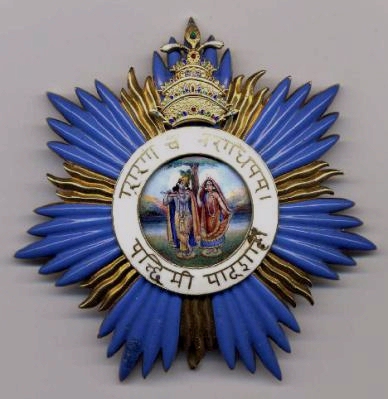
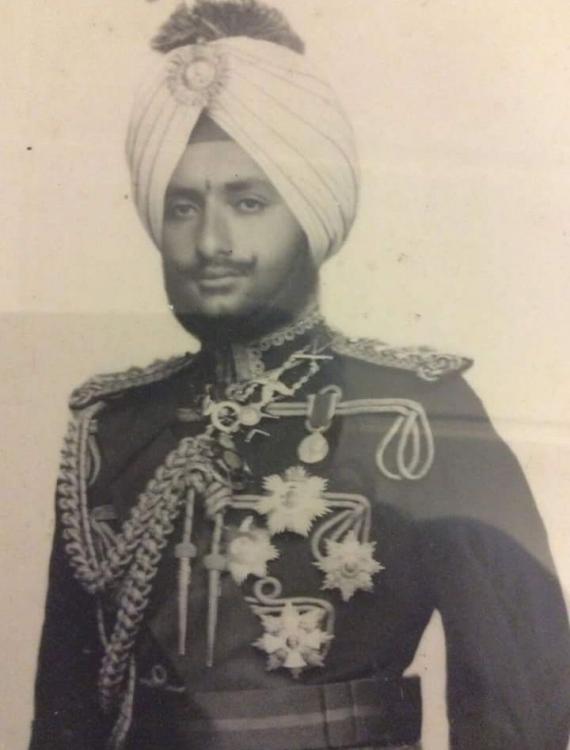
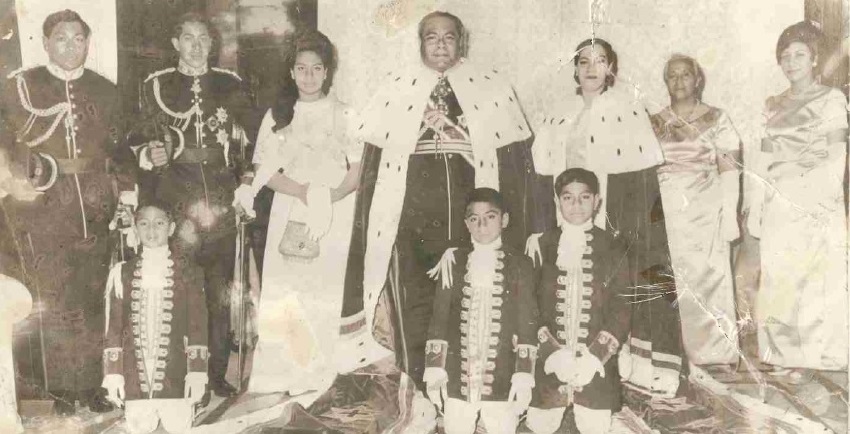
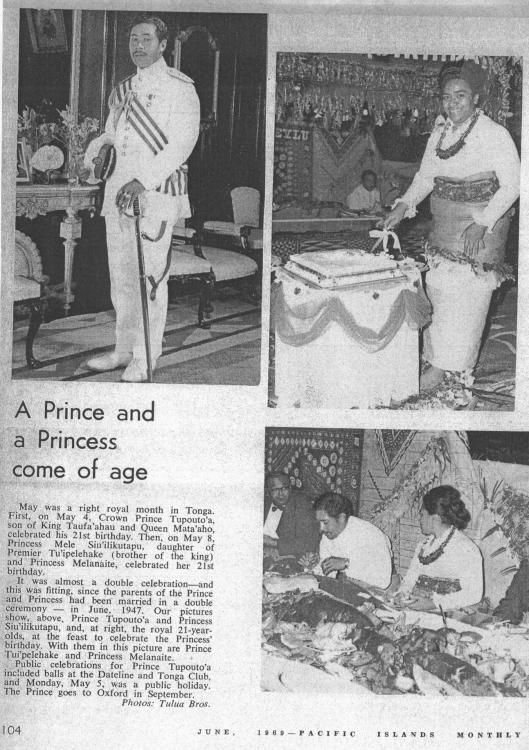


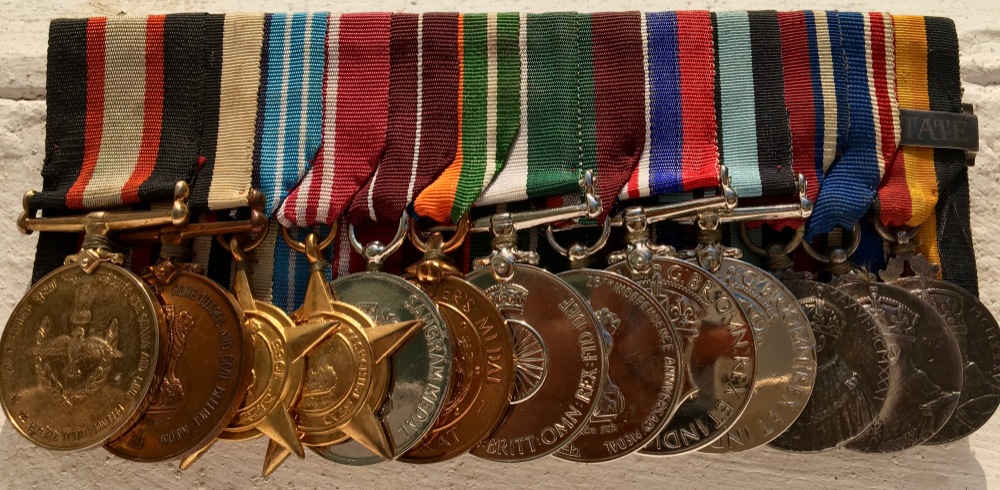
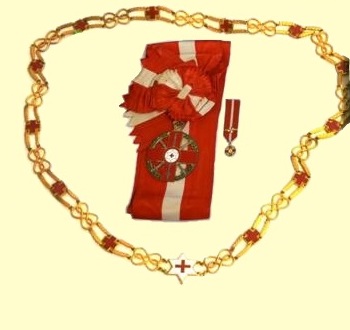
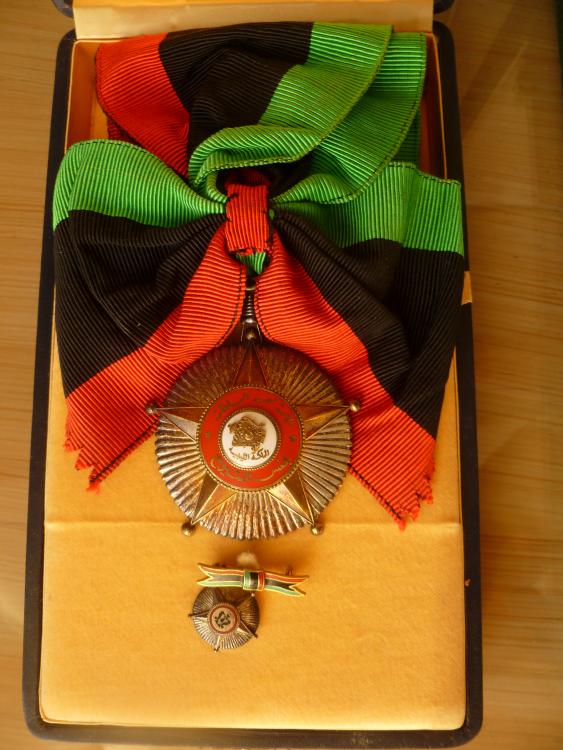
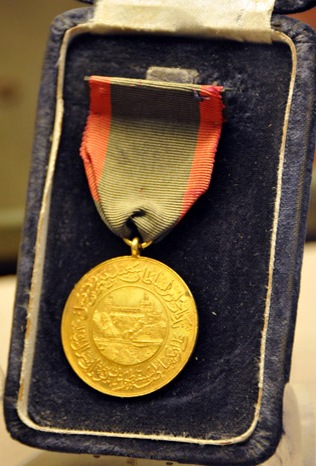
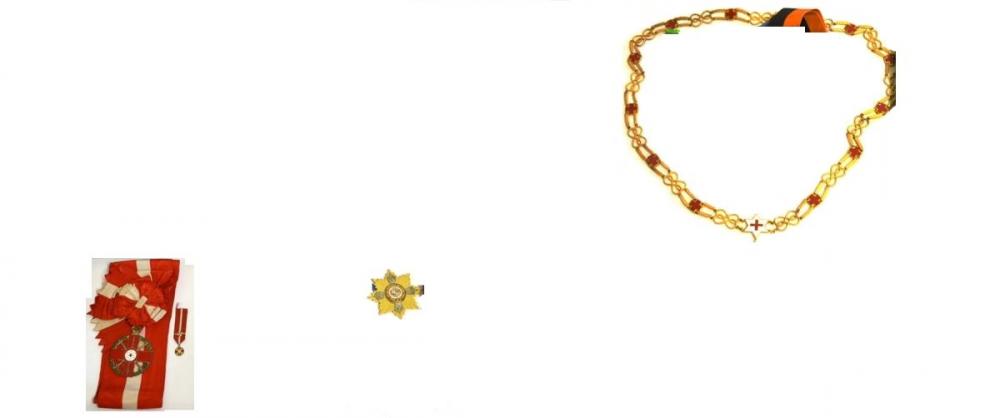
.thumb.jpg.1bed0f823fdebc38577cacdaaaf32a43.jpg)
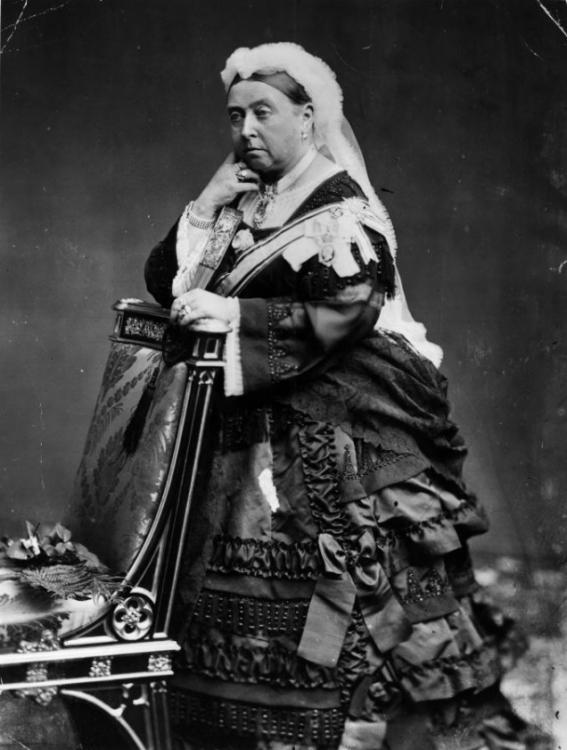
1.jpg.a145e406748b7169ed1fb3a8e0b5061b.jpg)

